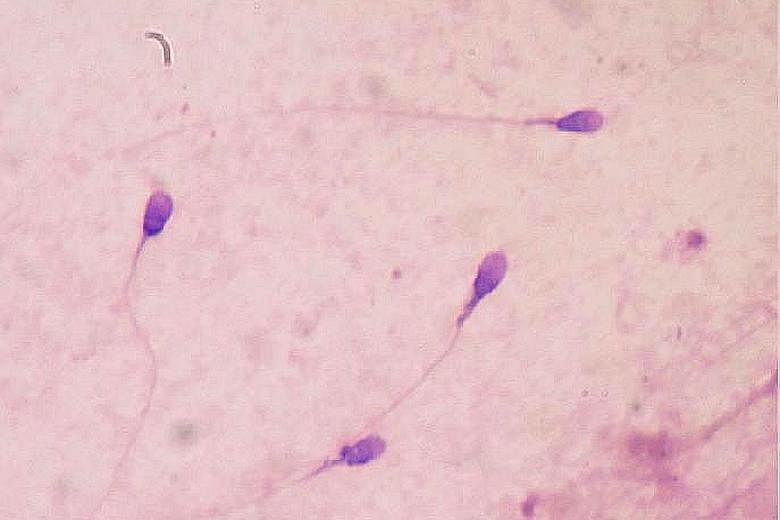Let's begin with sex. As a couple finish their business, millions of sperm begin theirs - rushing towards an egg to fertilise it.
But scientists say an increasing proportion of sperm - about 90 per cent in a typical young man - are misshapen, sometimes with two heads or two tails.
Even when properly shaped, today's sperm are often pathetic swimmers, veering like drunks or paddling crazily in circles. Sperm counts also appear to have dropped sharply in the last 75 years, in ways that affect the ability to reproduce.
"There's been a decrease not only in sperm numbers, but also in their quality and ability to deliver the goods," said Dr Shanna Swan, an epidemiologist at the Icahn School of Medicine at Mount Sinai, who added that researchers have linked semen problems to shorter life expectancy.
Dr Andrea Gore, a professor of pharmacology at the University of Texas at Austin and editor of the journal Endocrinology, said: "Semen quality and fertility in men have decreased. Not everyone who wants to reproduce will be able to. The costs of male disorders to quality of life, and the economic burden to society, are inestimable."
Human and animal studies suggest that a crucial culprit is a common class of chemical called endocrine disruptors, found in plastics, cosmetics, couches, pesticides and many other products.
Because of the environmental links, The New Yorker once referred to the crisis as "silent sperm" and innumerable studies add to the concern that the world's sperm are in trouble.
And so are men and boys.
Apparently related to the problem of declining semen quality is an increase in testicular cancer in many countries; in undescended testicles; and in a congenital malformation of the penis called hypospadias (in which the urethra exits the side or base of the penis instead of the tip).
These problems are often found together and are labelled testicular dysgenesis syndrome.
There is still disagreement about the scale of the problem.
But some scientists are beginning to ask: At some point, will we face a crisis in human reproduction? Might we do to ourselves what we did to bald eagles in the 1950s and 60s?
"I think we are at a turning point," said Dr Niels Erik Skakkebaek, a Danish fertility scholar and pioneer in this field. "It is a matter of whether we can sustain ourselves."
One study found that 56 per cent of the sperm-donor applicants in Hunan province, China, qualified in 2001 because their sperm met standards of healthiness. In 2015, only 18 per cent qualified.
The study, which involved more than 30,000 men, concluded: "The semen quality among young Chinese men has declined over a period of 15 years."
The crisis for male reproductive health seems to begin in utero.
Male and female foetuses start pretty much the same, and then hormones drive differentiation of males from females.
The problem seems to be that endocrine-disrupting chemicals mimic hormones and confuse this process, interfering with the biological process of becoming male.
AVOIDING PLASTICS
How should we protect ourselves?
Dr Swan said she avoids plastics as much as possible, including food or drinks that have been in contact with plastic or been heated in plastic.
She recommends eating organic food to avoid pesticide residues and avoiding painkillers during pregnancy. Receipts from thermal printers, like those from ATMs and petrol pumps, are also suspect.
If you doubt the stakes, remember this: Our human future will only be as healthy as our sperm.
NYTIMES

